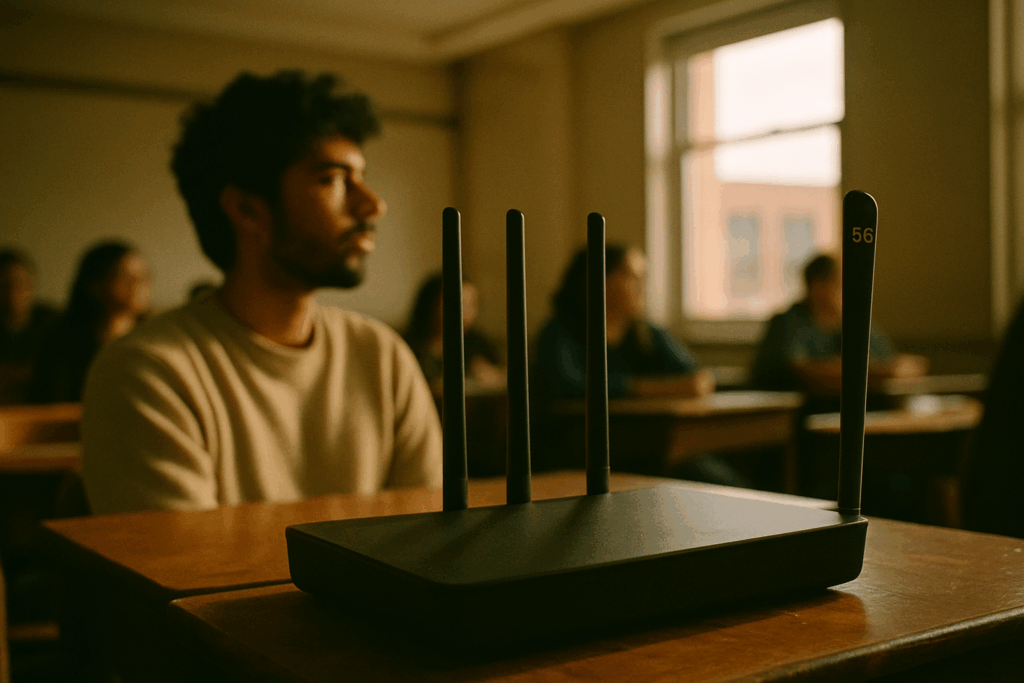Traditional classrooms haven’t kept up. Chalkboards, lectures, and static textbooks don’t speak to a generation raised on smartphones and streaming. Today’s learners aren’t just digital-savvy—they’re digital-native. They expect interaction, personalization, and instant feedback. Passive learning no longer holds attention. Engagement is the new currency.
That’s where AR enters the scene. Augmented reality offers a middle ground between the real and the digital. It brings content to life—overlaying information directly onto the learner’s world. Instead of reading about anatomy, students can explore a 3D human body. Instead of memorizing history dates, they can walk through a virtual battlefield. It’s learning that feels more like discovery than obligation.
AR’s role in this shift is growing fast. It turns lessons into experiences and information into something tangible. For a generation that swipes before it reads, that matters. In short, AR isn’t just a tool—it’s a response to what learners have been silently asking for: more real in their virtual.
Augmented reality isn’t a buzzword in education anymore. It’s showing up in classrooms—from grade school to college lecture halls—not as a gimmick, but as a core part of how students explore and learn. AR is bringing textbooks to life. A biology class doesn’t just read about the human heart anymore. They can dissect a 3D model mid-air, rotate it, and understand how things really fit together.
Virtual field trips are another game changer. With an app and a tablet, a fifth grader in Kansas can walk through the Louvre or tour the surface of Mars. For subjects like history, that means stepping into the Battle of Gettysburg or exploring ancient Rome, all while sitting in a classroom chair. It’s visceral learning—less lecture, more experience.
This isn’t theory anymore. Schools like Thomas Jefferson High in Virginia and Mt. Diablo Unified in California are already pushing this tech into their daily curriculum. At Jefferson, students use AR to simulate chemical reactions safely. At Mt. Diablo, geometry students work with virtual 3D puzzles to solve complex spatial problems. The results? Better focus, stronger retention, and a lot more enthusiasm coming through the door.
AR is no longer a someday tool. It’s a now tool—and it’s raising the bar for what classroom learning looks like.
Augmented reality is making learning more direct, more visual, and way more memorable. Instead of just listening to an explanation, viewers can now interact with 3D models, layered graphics, or immersive tutorials. It’s learning by doing—on-screen. That kind of hands-on exposure sticks, especially for complex or abstract content.
Where AR really shines is accessibility. Some ideas are hard to grasp in words, but drop a holographic diagram or on-screen walkthrough into a vlog, and there’s suddenly clarity. It’s not just for techy subjects either—everything from home DIY to science concepts is getting the AR boost.
And don’t underestimate the social angle. Collaborative AR is starting to roll out, letting multiple users experience content together. That opens the door to group-based challenges, virtual co-creation, and shared storytelling in real time. For creators who thrive on community, it’s a new frontier worth exploring.
Bringing AR into vlogging—or any layer of digital life—requires real gear. That means better cameras, up-to-date smartphones, faster processors, and serious bandwidth. Where creators once got by with basic editing software, we’re now looking at AR-ready platforms, spatial audio setups, and hybrid editing suites that can handle 3D overlays.
But having the gear is one thing. Knowing how to use it is another. Especially for teams working behind the scenes, whether you’re a solo vlogger scaling up or working with remote editors and brand managers. Training matters. Without it, you end up with expensive tools and half-baked content.
The core issue, though, is access. If AR-powered content becomes the new bar and only creators with premium setups can participate, the gap gets wider. Smaller creators or those in low-resource areas are at risk of being pushed out—just when the promise of digital expression is supposed to be more open than ever. This isn’t just about trendy tech—it’s about making sure everyone has a shot at keeping up.
The Power Combo of AR + AI in Personalized Learning
Augmented Reality and Artificial Intelligence are no longer separate tech buzzwords. They’re merging into something a lot more practical—especially in learning. AR gives an interactive, visual layer to education. AI figures out what each learner needs, their pace, and how best to engage them. Put the two together, and you get a personalized learning experience that adjusts in real time.
Think of a kid learning anatomy. The AR headset projects a 3D model of the human body in the room. The AI watches how they explore it and adjusts the lesson on the fly. Struggling with muscles? It shows them a simplified breakdown. Getting it fast? It moves on to ligaments or nerve systems. The learning becomes less about sticking to a syllabus and more about actually mastering the content.
This combo isn’t just for kids, either. Corporate training, medical simulations, and DIY skill learning are all shifting. AI and AR pair up to create content that adapts—not just to ability, but to behavior, location, even time of day.
For more on how AI is changing the gear behind the scenes, check out this related read: AI-Powered Hardware — How Artificial Intelligence Is Revolutionizing Devices.
Forecasts and Trends: AR in Education
Augmented Reality is no longer a tech demo. It’s moving into classrooms, labs, and learning environments in ways that actually stick. AR glasses are becoming less bulky and more functional, opening up everything from anatomy lessons in 3D space to collaborative historical recreations. Spatial learning—where students interact with subjects in a physically dynamic way—is turning traditionally dense material into something more immersive and easier to absorb.
Remote AR classrooms are also rising, combining the flexibility of online learning with tactile engagement. That means a student in a rural area can dissect a virtual frog or walk through a Roman ruin with the same clarity as someone in a tier-one institution. The shift here isn’t just in tools—it’s in mindset. AR is crossing the tipping point from experimental to expected.
For educators and institutions, this is about readiness. Start small: pilot programs, targeted hardware investments, staff upskilling. Build platforms that scale, not just tech that impresses. The schools doing that today will lead tomorrow. Everyone else will play catch-up.
Innovation in education isn’t optional anymore. It’s survival. The old models aren’t keeping up, and students know it. Attention spans are shorter, expectations higher, and the competition for mindshare is brutal. If learning isn’t engaging, it gets ignored.
This is where AR steps in. Not as a silver bullet, but as a sharp tool in the right hands. Augmented reality can turn passive lessons into active exploration. Geography becomes a walk-through, biology turns 3D, and history jumps off the page. But it still needs a guide. The tech doesn’t replace the teacher—it amplifies what the teacher can do.
The bottom line: AR won’t save education on its own. But in the hands of educators who know how to blend tech with teaching, it can reshape what’s possible. It’s not about cutting corners. It’s about extending reach, deepening impact, and keeping students locked into learning that feels real.


 Isaac Lesureneric is a tech author at gfxrobotection focusing on digital security, automation, and emerging technologies. He shares clear, practical insights to help readers understand and adapt to the rapidly changing tech world.
Isaac Lesureneric is a tech author at gfxrobotection focusing on digital security, automation, and emerging technologies. He shares clear, practical insights to help readers understand and adapt to the rapidly changing tech world.

